- News
- Reviews
- Bikes
- Accessories
- Accessories - misc
- Computer mounts
- Bags
- Bar ends
- Bike bags & cases
- Bottle cages
- Bottles
- Cameras
- Car racks
- Child seats
- Computers
- Glasses
- GPS units
- Helmets
- Lights - front
- Lights - rear
- Lights - sets
- Locks
- Mirrors
- Mudguards
- Racks
- Pumps & CO2 inflators
- Puncture kits
- Reflectives
- Smart watches
- Stands and racks
- Trailers
- Clothing
- Components
- Bar tape & grips
- Bottom brackets
- Brake & gear cables
- Brake & STI levers
- Brake pads & spares
- Brakes
- Cassettes & freewheels
- Chains
- Chainsets & chainrings
- Derailleurs - front
- Derailleurs - rear
- Forks
- Gear levers & shifters
- Groupsets
- Handlebars & extensions
- Headsets
- Hubs
- Inner tubes
- Pedals
- Quick releases & skewers
- Saddles
- Seatposts
- Stems
- Wheels
- Tyres
- Health, fitness and nutrition
- Tools and workshop
- Miscellaneous
- Cross country mountain bikes
- Tubeless valves
- Buyers Guides
- Features
- Forum
- Recommends
- Podcast
feature
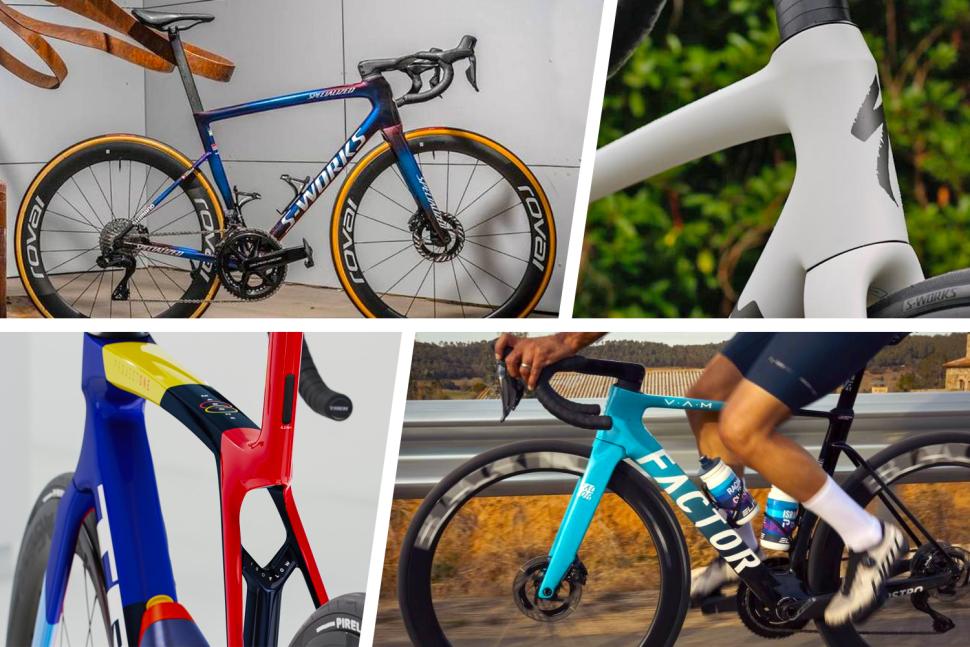 One bike to rule them all July 2024
One bike to rule them all July 2024One bike to rule them all — are lightweight aero bikes the ultimate race weapons for the pros?
A few years ago, many pro cycling teams offered riders a choice between a lightweight road bike and an aero road bike. This trend shifted as many manufacturers began adopting models designed to be both lightweight and aerodynamic, but was this move to a 'one bike to rule them all' approach still evident at this year's Tour de France?
In the past few years, we've seen the emergence of super light aero bikes, or aero lightweight bikes, depending on your perspective. Aside from time trials, some riders will spend the whole Tour de France - and any other road race - on just one bike, regardless of the elevation or course profile.
'Pure' aero road bikes are few and far between these days, so let's delve into whether anything has changed with the latest crop of race bikes at the Tour de France.
Trek Madone Gen 8... and the death of the Émonda
Let's start with the Trek road bike we first spotted Lidl-Trek riders using at the Critérium du Dauphiné. Initially, it sparked confusion over whether it was a new Madone or Émonda, but it has since been released as the Trek Madone Gen 8.
Trek claims the new Madone is as aerodynamically efficient as the previous Madone and as light as the existing Émonda SLR. By merging these two top-end road bikes, Trek is adopting a one-bike-to-do-it-all approach. So, how come the new Madone managed to kill off the Émonda, a very successful bike that presumably didn’t sell badly either?
"With a new Gen 8 Madone, you really don’t need two race bikes anymore", says Trek’s director of road bikes Jordan Roessingh. “It provides that snappiness and lightweight ride of the Émonda, but still provides that feeling of speed that you can only get on the Madone, and encapsulates that into one single bike platform."
“If you’re an Émonda rider, you’re getting a much, much faster bike with the new Madone, but it’s the same weight. You get a bike that’s much, much lighter than the seventh-generation Madone, but with the same aerodynamics."
Let’s take a look at what other brands have been up to…
Specialized Tarmac SL8: faster than the Venge, stiffer and lighter than the SL7
The Specialized Tarmac is a thoroughbred racing bike, and nearly four years after it became the brand’s ‘one bike to rule them all’ with the launch of the Tarmac SL7 and the discontinuation of the Venge, the revamped SL8 continues as Specialized’s do-it-all race bike.
Two teams in the Tour de France rode the SL8 – Red Bull-Bora-Hansgrohe and Soudal Quick-Step – regardless of whether the stage is flat, mountainous, or somewhere in between.
> Specialized Tarmac SL8 vs SL7
The Tarmac SL8 claims to be 15% lighter and 6% more compliant than the SL7, has an improved stiffness-to-weight ratio to the tune of 33% and is 16.6 seconds faster over 40km (25 miles).
One bugbear that fans of aero might have had with the SL7 was that it actually didn't test as fast as the discontinued Specialized Venge at numerous angles in the brand's own 'Win Tunnel'. However, according to Specialized, the SL8 is both faster than the 2019 Venge and also the lightest bike in the WorldTour peloton. Those are some pretty big claims!
Is the Van Rysel RCR Pro still the brand's all-rounder?
> Can the Van Rysel RCR Pro become one of the most successful bikes on cycling's WorldTour?
Initially, it looked like Van Rysel was going down the one-bike-does-it-all approach with their RCR Pro road bike which Yann Le Fraillec, Chief Product Officer at Van Rysel described as "the perfect balance between aero, stiffness and weight".
Yann says: "For us, an aero light bike, which is what we call it, is the most efficient [approach] for most roads that the pro team rides. They are riding faster and faster even [on] climbing stages, so aero is more and more important."
However, at this year's Tour, Decathlon AG2R sprinters were spotted riding a new Van Rysel aero bike. Given that the RCR Pro was only released a year ago, we doubt this is a replacement. Instead, we think that the brand could be reintroducing a specialised aero bike alongside their current do-it-all model, replacing the FCR.
This is a rarity these days with brands such as Specialized, Trek and Colnago, opting for a one-bike-to-do-it-all approach. Clearly, Van Rysel think they can find some extra watts from a fully aero bike.
Pinarello Dogma F: lighter and more aerodynamic, of course
Pinarello’s F line is arguably the trendsetter in this whole thing. The Italian brand has always been an advocate for a one-bike approach, and it has previously paid off. Under Team Sky and Ineos, Pinarello bikes have won everything from Grand Tour general classifications to one-day races and Classics. Of course, it helps to have a talented rider on board.
Pinarello launched the latest Dogma F, just before this year's Tour de France with claims – naturally enough – that it was lighter (by 108g) and more aerodynamically efficient (by 0.2%) than its predecessor.
Pretty much every top-end road bike launch focuses on lower weight and/or improved aerodynamics, and Pinarello claims both for its updated Dogma F. “Over the course of a Grand Tour, a 0.2% improvement in the coefficient of aerodynamic drag (CdA) equates to a 175g saving on the bike,” Pinarello says.
Some familiar features remain on the updated model. The fork and seatstays still wave slightly, the top tube kinks a little, and the seat tube is cut away slightly around the leading edge of the rear wheel. The tabs behind the fork dropouts, designed to reduce turbulence, are still present too. However, the bike now has a deeper head tube, a slimmer down tube, and a completely redesigned section of the frame around the bottom bracket.
Canyon Aeroad CFR: aero or all-rounder?
Canyon released the new Aeroad CFR this month, but is the Aeroad truly aero? The brand describes it as an all-rounder, yet "the fastest bike in the WorldTour peloton".
This summer, Alpecin-Deceuninck and Movistar riders used the new Canyon Aeroad CFR, with even Movistar's climber, Enric Mas, opting for the Aeroad in the mountains. Last year, he preferred the lightweight Ultimate.
Interestingly, despite Canyon also offering the Ultimate as their lightweight road bike, none of the riders used it at this year's Tour. It's unclear whether this is due to sponsor pressure or if they might return to the Ultimate in the future.
> Why the new 2024 Canyon Aeroad might be the END of exciting aero road bikes
With subtle updates to the components and frame, the 4th-gen Aeroad has a deeper headtube, integrated bottom bracket area on non-drive side chainstay and a broader fork design that tapers to a narrower headtube.
In terms of weight, the Aeroad CFR Di2 has a claimed weight of just 7.07kg, yet the frameset is said to tip the scales at 960g, 45g more than the previous Aeroad. That's not exactly light by do-it-all race bike standards in 2024, with the Specialized SL8 frame weighing 685g, but Canyon has managed to keep the overall bike weight competitive with a new lighter cockpit and shallower wheels.
Factor Ostro Vam: better than the Specialized Tarmac SL8 and Cervelo S5?
Israel-Premier Tech riders are using Factor's Ostro Vam this season, which the brand describes as "the benchmark aerodynamic, lightweight race bike." According to Factor, it boasts better aero efficiency than the Specialized Tarmac SL8 and Cervelo S5.
The previous version of the Ostro Vam claimed to match the benchmark aero bike on the market at the time (the 2019 Cervelo S5) in terms of aerodynamics while being significantly lighter. So, why did it need redesigning?
Factor says it wanted to take advantage of UCI rule changes – notably the removal of the 3:1 rule, which limited component depth to three times their width, and the ability to reduce main frame tube profiles to less than 25mm.
The new design is said to save 7 watts of power at 48km/h (30mph) over the first Ostro VAM, which was launched in 2020. Additionally, it’s 267.8g lighter when fitted with Black Inc wheels, though most of the weight savings comes from the wheels.
Colnago V4RS: it’s all about versatility
UAE Team Emirates and Pogačar's Colnago V4RS wasn't new for the Tour de France this year, but it is the Italian brand's do-it-all bike. At the end of 2022, Colnago combined the previously separate characteristics of aero efficiency and light weight, creating a bike that claims to be both lighter and more aero than the previous V3RS.
The bike is designed to be "as versatile as possible, suited to the needs of sprinters, rouleurs and climbers alike, and to be at the top in the different phases of a race.” It has certainly carried Pogačar to a range of victories so far this year.
The V4Rs's carbon fibre monocoque frame has a claimed weight of 798g (size 51), while the full carbon fibre fork is around 375g. Together, the frame, fork, headset and handlebar are are 47g lighter than the V3RS. That’s not a vast amount, but it all counts when you’re riding up the Tourmalet.
Scott Foil RC: aero is getting lighter
Team dsm-firmenich PostNL uses the Scott Foil RC road bike for all stages, despite Scott also offering the Addict, which is designed for climbers. However, there is a new Addict on the UCI equipment list so maybe things will change when it gets released.
The Scott Foil RC is built for speed and it has been developed in partnership with aerodynamicist Simon Smart of Drag2Zero. The frame features almost time-trial-bike levels of tubing and according to Scott, these aero gains resulted in a 16-watt saving or 1m 18s faster 40km benchmark time at 40km/h over its predecessor.
At 7.35kg, the Foil is on the lighter side of the aero road bike spectrum. It’s 9% lighter than the previous generation, and the frameset is now just 135g heavier than the Addict RC Pro.
Cannondale SuperSix Evo Lab71: the all-rounder for EF Education-EasyPost
The Cannondale SuperSix Evo Lab71, ridden by EF Education-EasyPost, serves as their one-bike-to-do-it-all, even though the brand also offers the SystemSix pure aero road bike. The SuperSix Evo Lab71 integrates aero features from the SystemSix into the traditionally weight-focused SuperSix Evo, with aerodynamics claimed to be close to that of the SystemSix.
The frame features an aerodynamically optimised fork, designed without down tube integration for a cleaner aesthetic and a separate crown interface. The head tube houses Cannondale's Delta Steerer tube, allowing for cable integration.
Additionally, the bike uses a slimmer seatpost and a seat tube that tapers more towards the bottom of the bike. This design is intended to ensure optimal aerodynamics and better compliance.
A fully built Cannondale SuperSix Evo Lab71 tips the scales at the UCI minimum weight limit of 6.8kg and the engineers managed to shed significant weight thanks to a new carbon-fibre layup and some carefully considered component choices. Called Series 0 and only available on the top-tier Lab71 versions, this special fibre and nano-resin composite sheds 40g grams over the Himod at 770g for a painted 56cm frameset.
So, has anything changed with the latest crop of race bikes at the Tour de France?
Bike manufacturers are increasingly moving towards a one-bike-to-do-it-all approach, and Trek is the latest brand to join the likes of Specialized, Pinarello, and Colnago with their aero and lightweight Madone Gen 8.
Around half the teams at this year's Tour de France chose to use a single bike for the entire race, regardless of the varying terrain. Notably, some teams with the option of a lightweight bike still opted for their aero models.
Why is this the case? Well, as races get faster and riders set record times, the need for aerodynamic efficiency grows. Yann Le Fraillec, Chief Product Officer at Van Rysel, explains, "For us, an aero light bike, which is what we call it, is the most efficient [approach] for most roads that the pro team rides. They are riding faster and faster even [on] climbing stages, so aero is more and more important."
Despite this, Van Rysel seems to be reconsidering the one-bike approach. Decathlon AG2R sprinters were spotted on an unreleased Van Rysel aero bike, suggesting that the brand believes a fully aero bike might still offer a performance advantage.
Are aero lightweight bikes as light as dedicated climbing models?
Well, knowledge of aero philosophy has continued to evolve with most designs now using a Kamm-back design rather than heavier truncated aerofoils. Higher modulus (stiffer) carbon fibres are now used, which means that less material can be used to get the same stiffness; this also had a positive impact on frame weight.
All of this, along with generational improvements and bikes being developed as a complete system rather than a standalone frame, means that aero bikes have shed some serious timber.
Are they just as aero? The simple answer is yes. We don’t have a wind tunnel but manufacturers can’t lie about their speed and aerodynamic claims (although they can choose to publish only the favourable data).
The new lightweight bikes might not be quite as aerodynamically efficient as deeper-tubed and heavier predecessors but the differences are tiny.
Will the trend continue? This depends a lot on the UCI weight limit remaining at 6.8kg. Teams are now perfectly capable of getting their aero bikes down to this limit. If the 6.8kg limit remains, why bother developing a lighter, less aero climbing bike?
Are you a fan of the latest ‘do it all' bikes or would you rather a specific tool for a specific purpose? Let us know in the comments below.
Emily is our track and road racing specialist, having represented Great Britain at the World and European Track Championships. With a National Title up her sleeve, Emily has just completed her Master’s in Sports Psychology at Loughborough University where she raced for Elite Development Team, Loughborough Lightning.
Emily is our go-to for all things training and when not riding or racing bikes, you can find her online shopping or booking flights…the rest of the office is now considering painting their nails to see if that’s the secret to going fast…
Latest Comments
- David9694 6 hours 52 min ago
Car crashes outside Poundland in Abingdon town centre...
- ktache 7 hours 6 min ago
I'm impressed by my DX1000, the keys look difficult for picking, though I'd like to seethe LPL having a go at one. And it definitely feels the part...
- dubwise 8 hours 20 min ago
So cyclists will be punished far heavier than killer drivers. Sums up the fkd up UK.
- HLaB 8 hours 33 min ago
I've done the 312 and other closed roads events like the Etape Caledonia and each time there is bad press like this in advance but on the day the...
- Rendel Harris 8 hours 34 min ago
It's not that surprising that Mr GrumpyGobshite hasn't seen the 20mph limit "stuck too [sic] in 47 years" as it was only reintroduced in 2004, it...
- Pub bike 8 hours 49 min ago
Spiral wound cables can expand and contract and possibly help with brake modulation, as well as make tighter bends. ...
- Burnsy Bhoy 10 hours 11 min ago
My TL200 rear light stopped working after 14 months - it seems IP ratings arent what they say on the tin! I have tried different brands and all...
- OnYerBike 16 hours 22 min ago
I've no idea what the situation is here, but I've seen plenty of "under construction" cycle lanes where there are only signs/barriers around the...
- the little onion 16 hours 29 min ago
whereas the whole point is that they didn't hit you this time
- Tom_77 16 hours 42 min ago
AIUI an entering-circulating accident [sic] would be when the vehicle entering the roundabout fails to give way to the vehicle circulating.
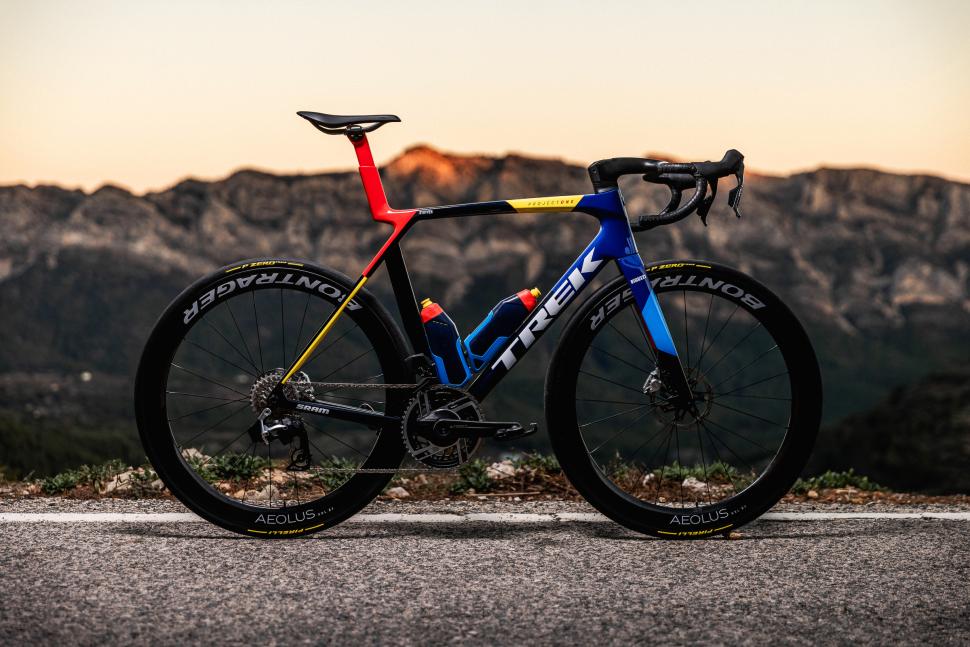
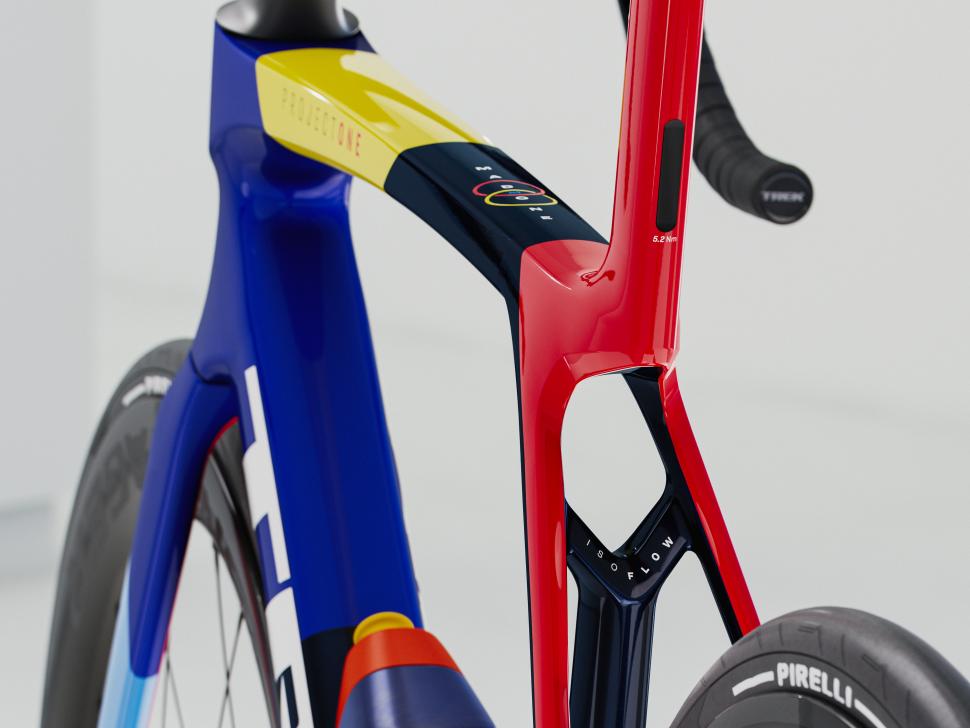
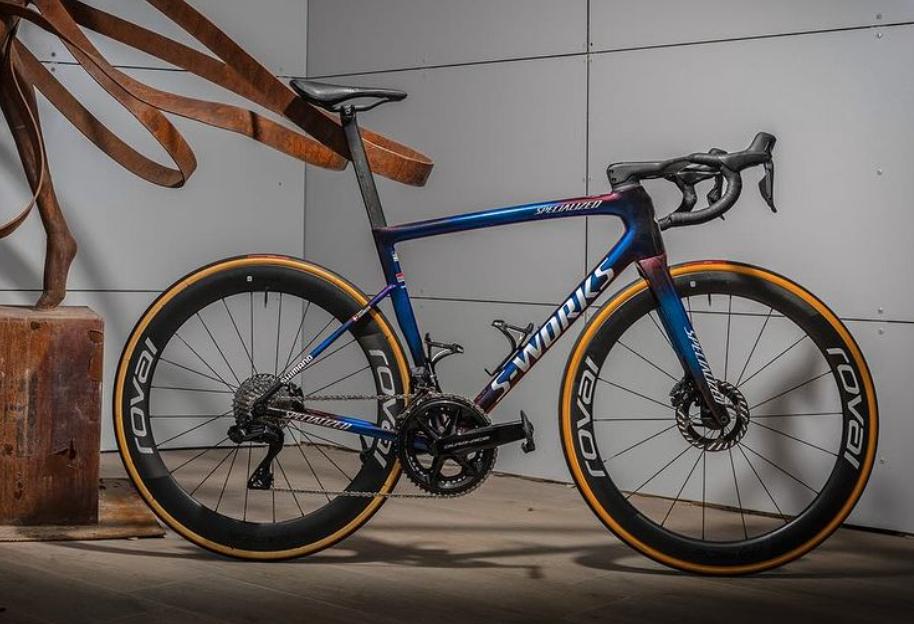
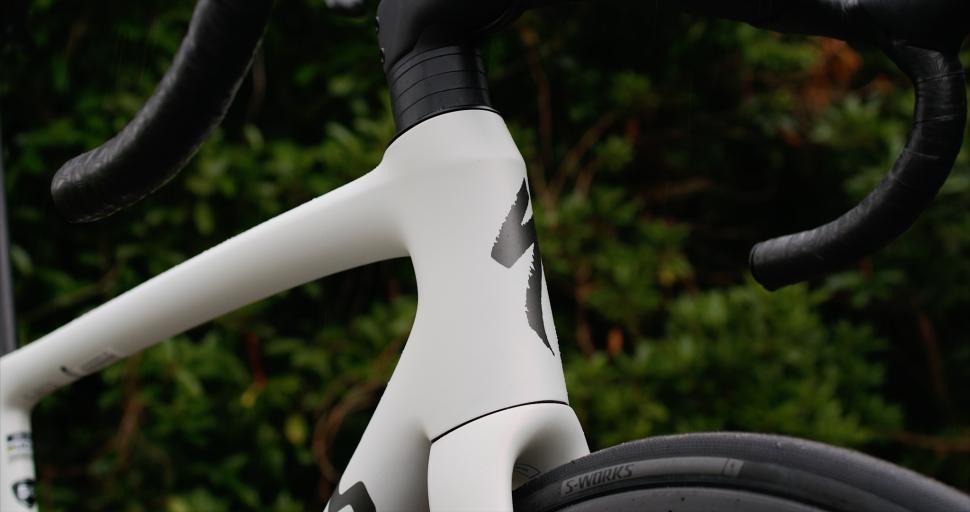
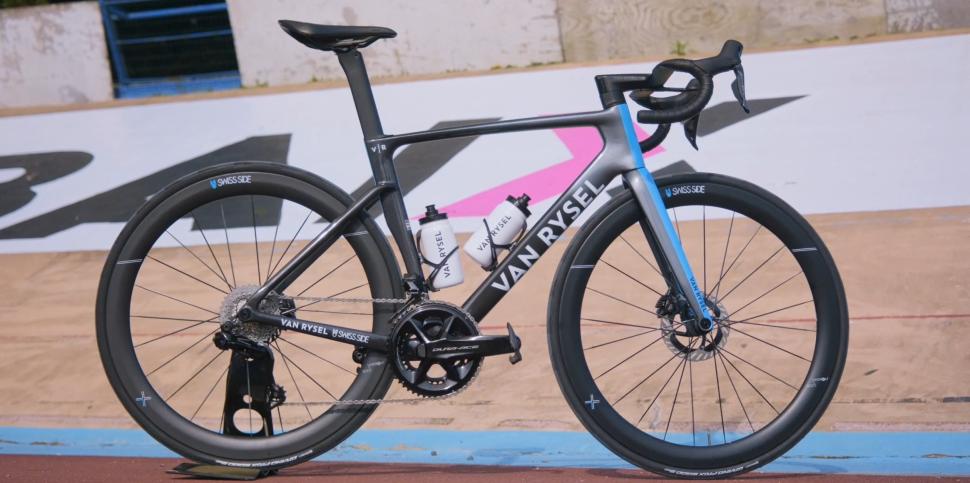
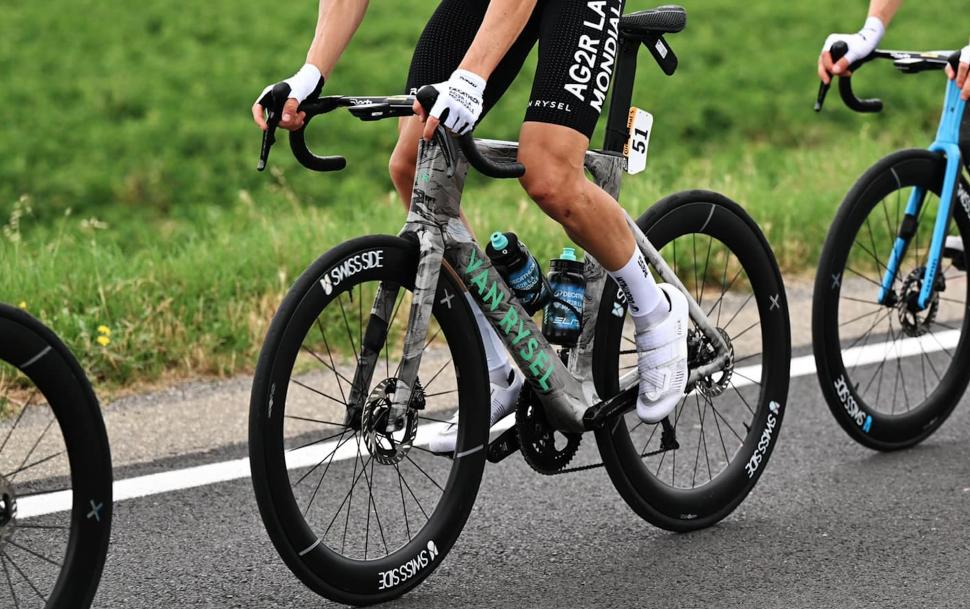
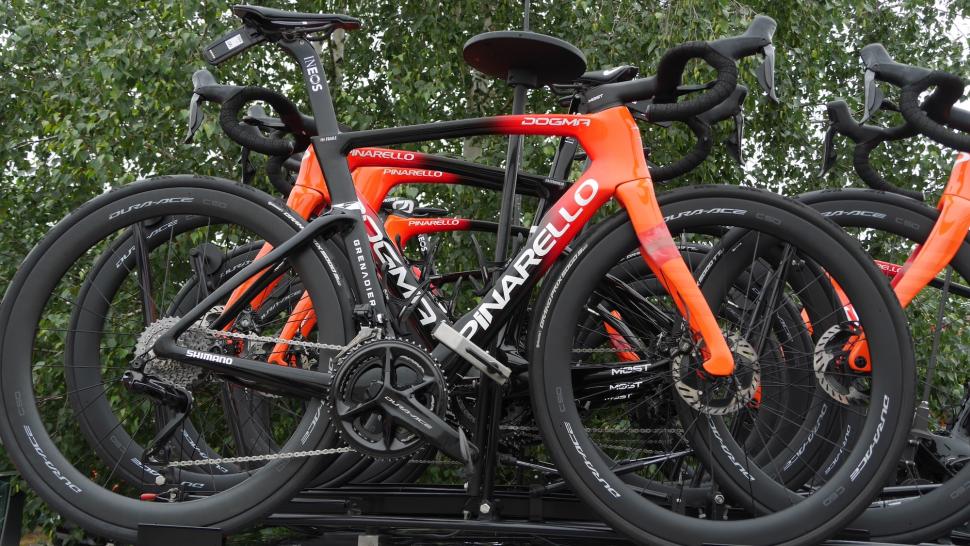
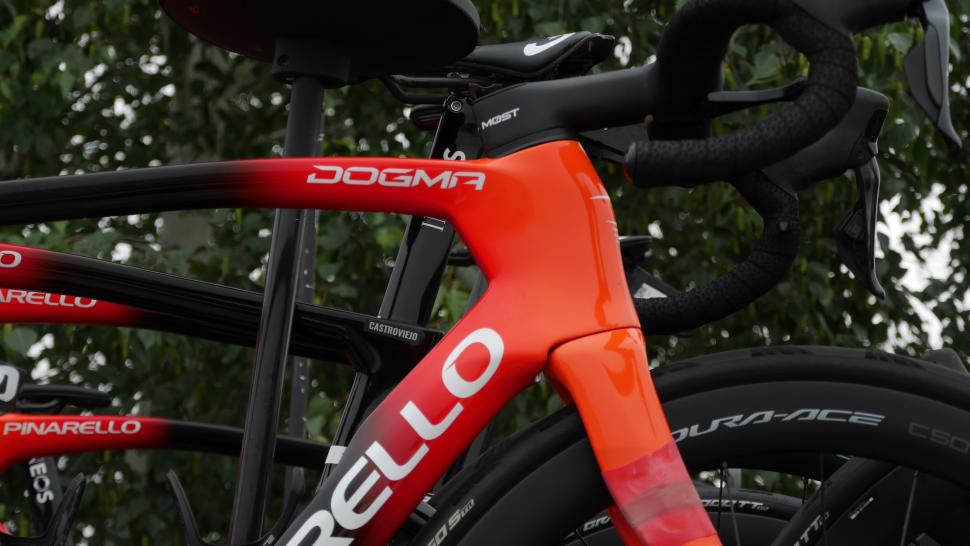
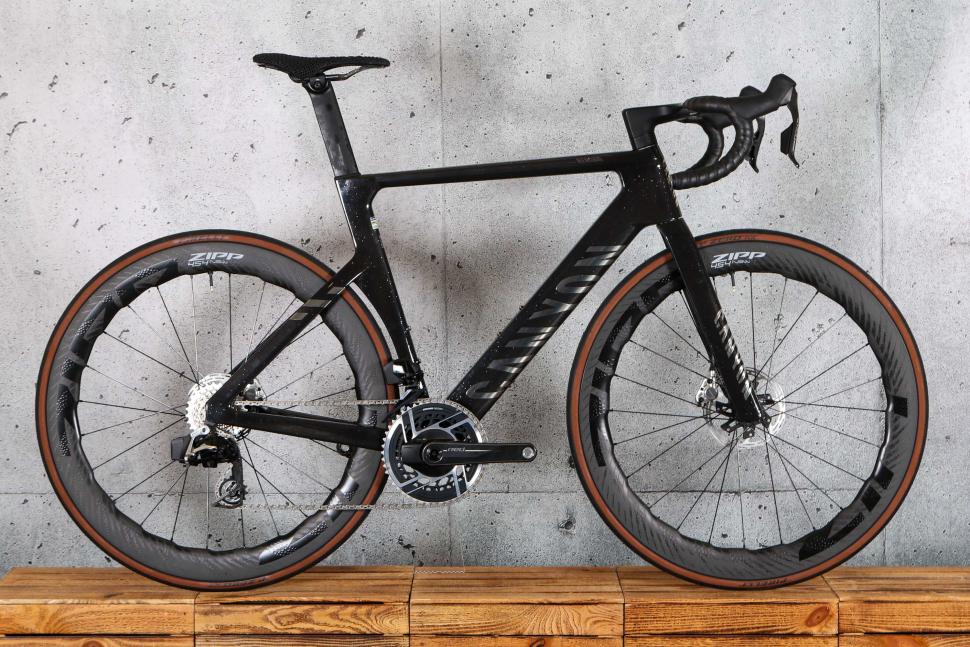

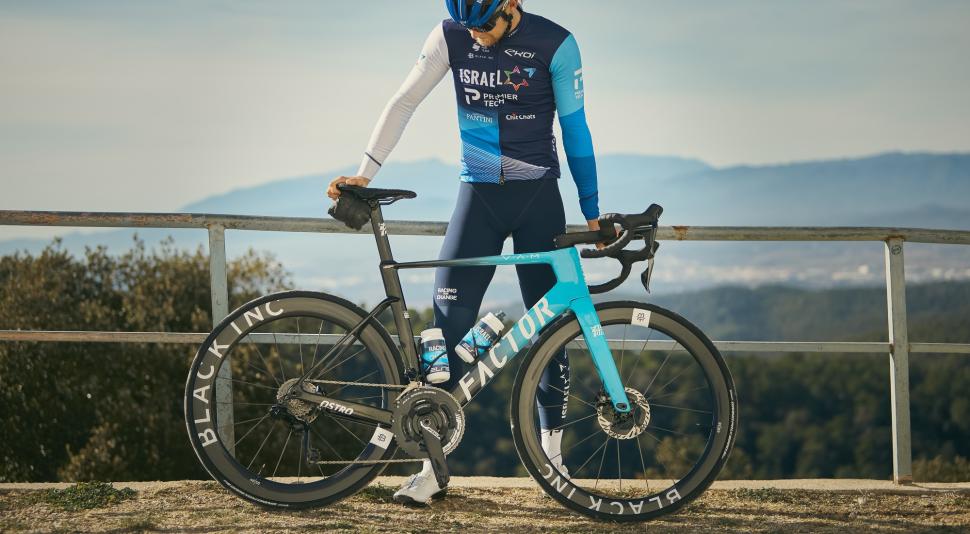


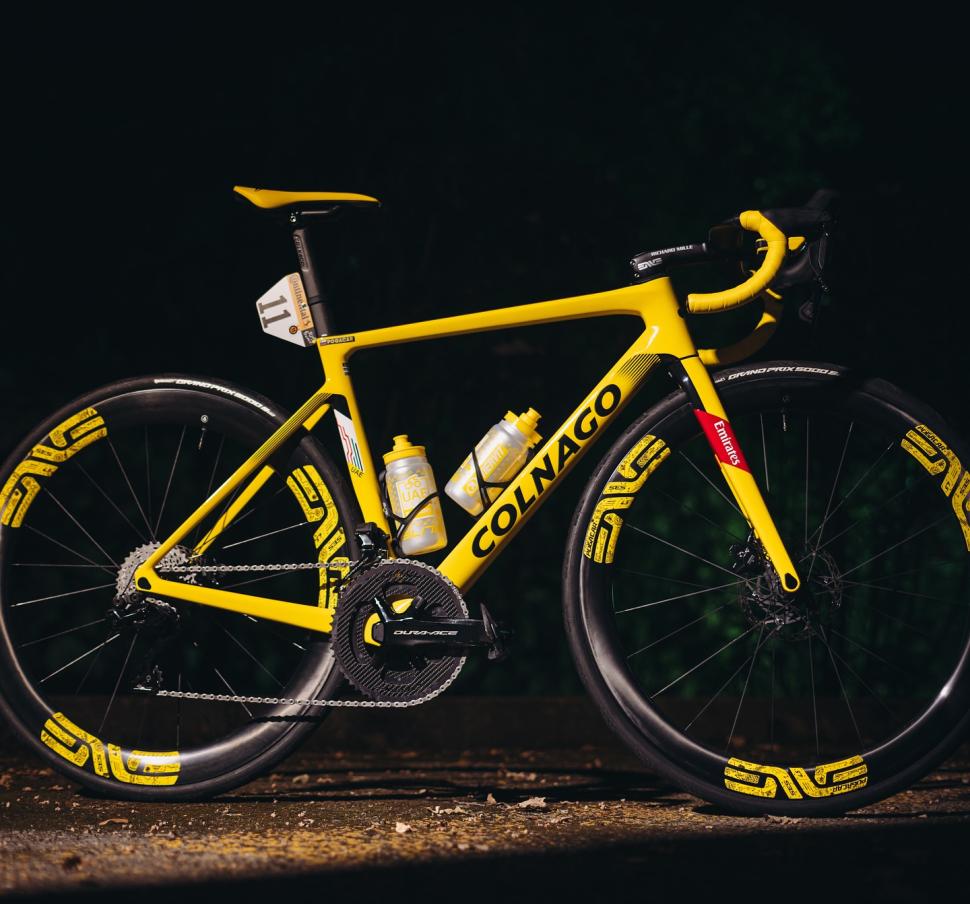
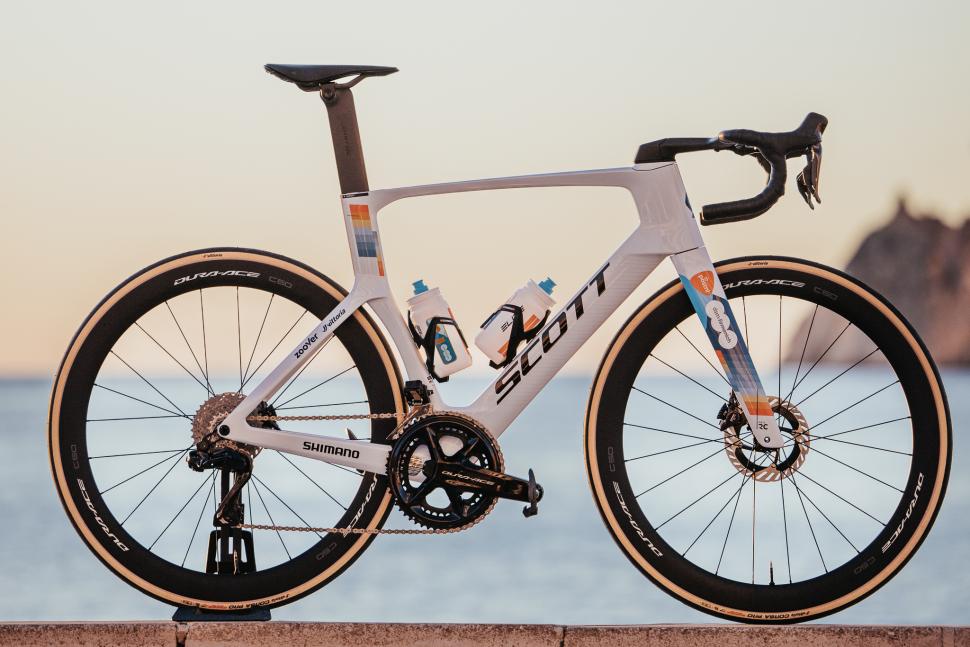
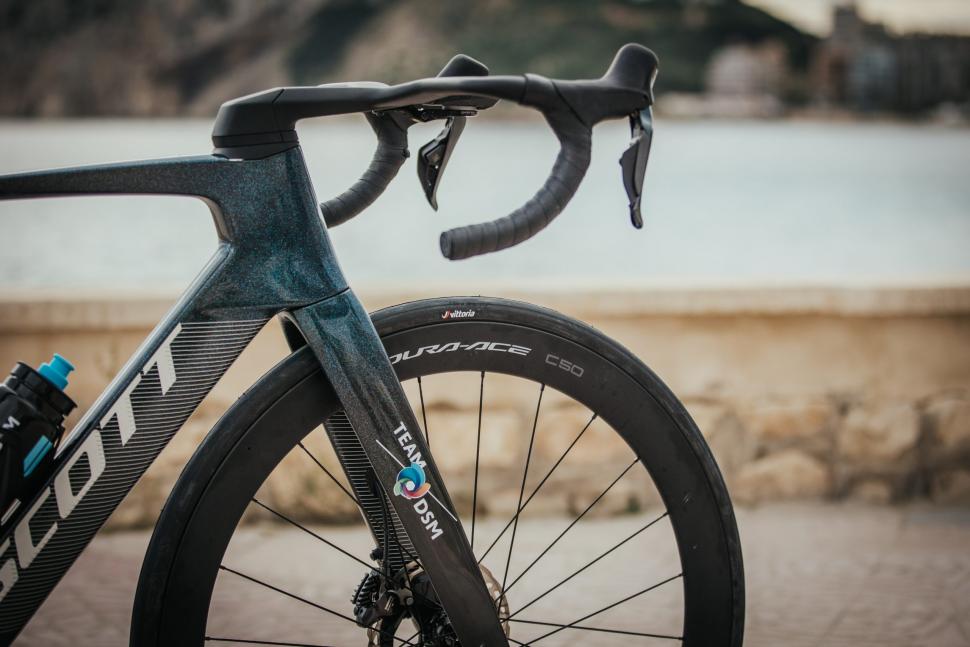

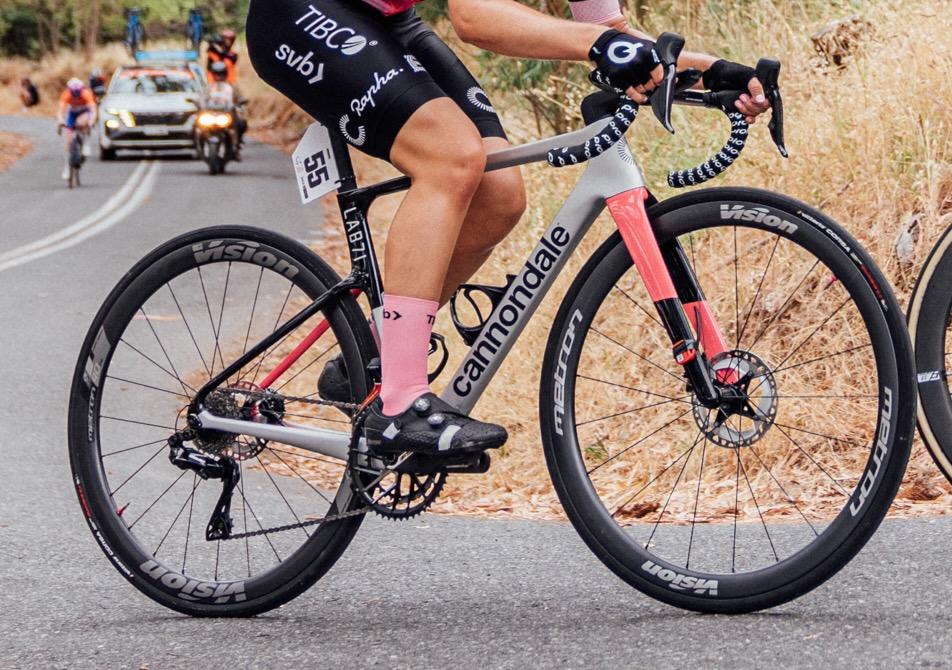
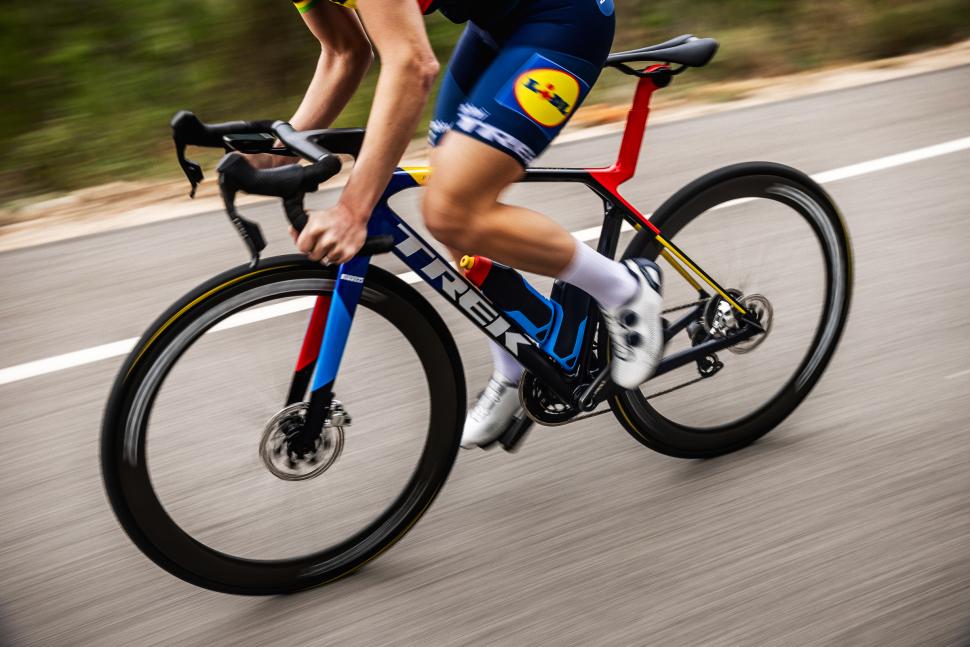
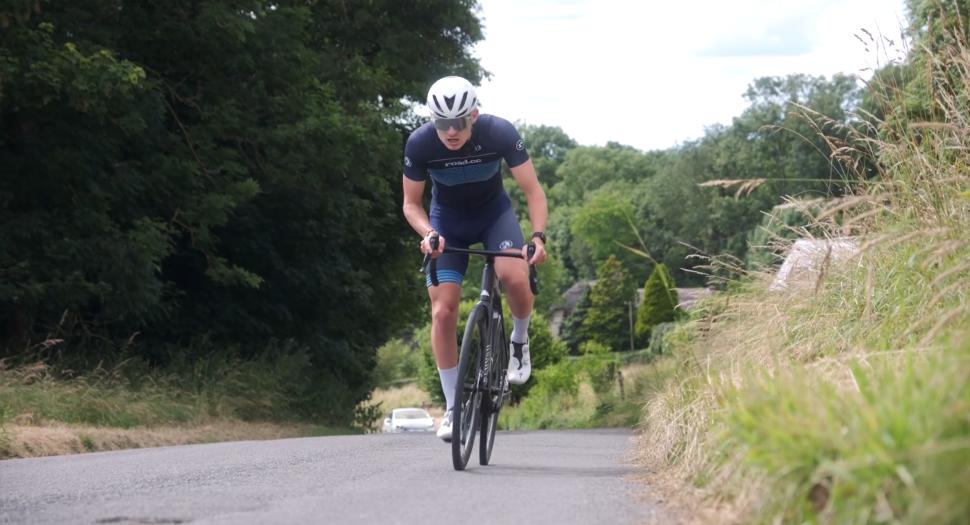
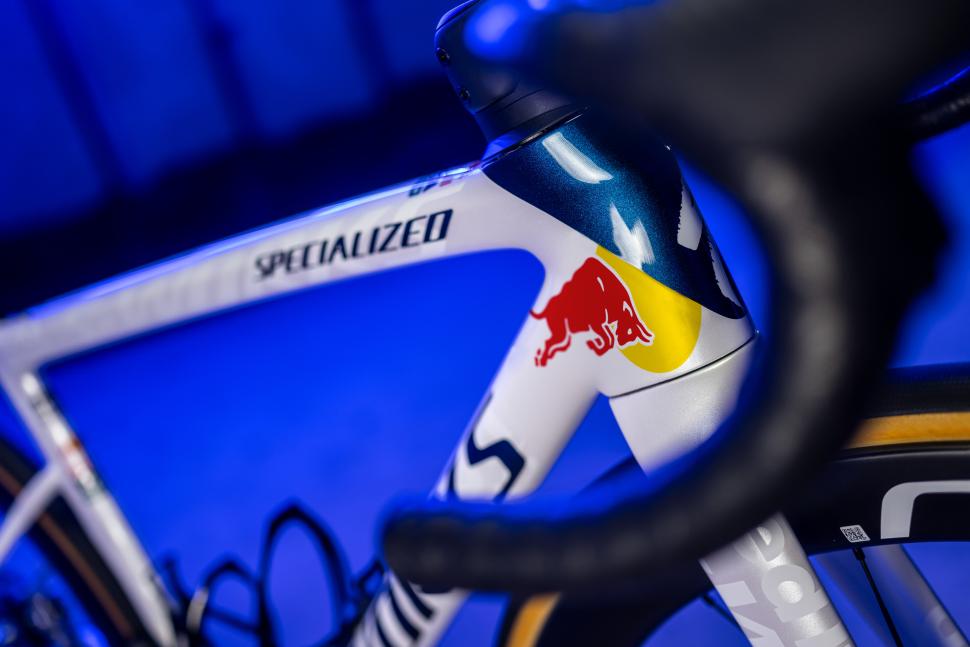
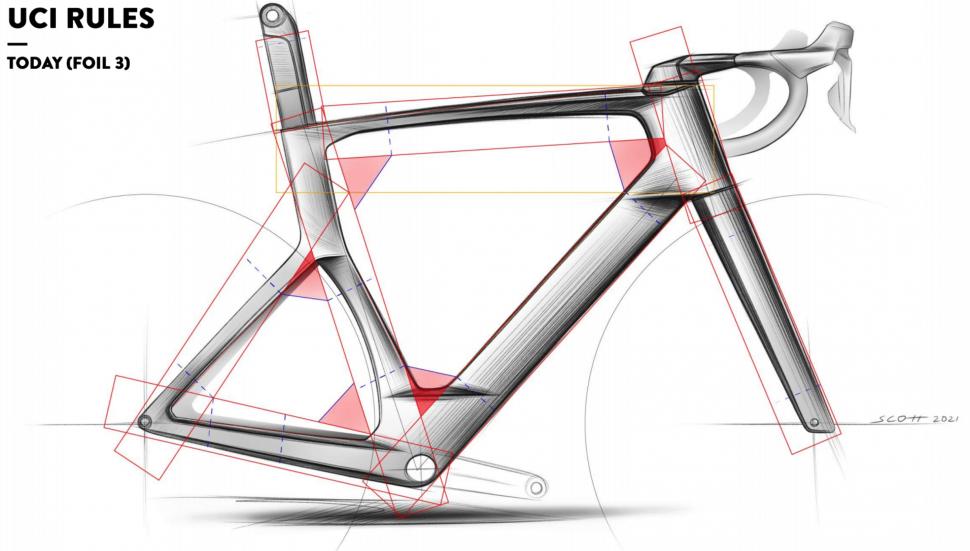
Add new comment
4 comments
Having only one bike is better for manufacturers; cuts down on costs, etc There's far too many models of bikes, many are not really needed.
And I firmly believe the UCI need to implement a rule seen in motorsport; you nominate one bike model per team for the season, and that is all you use - no matter what race, whether on road, gravel, cobbles, or even TT, etc
Look at rallying; teams use the same car, and adapt for each surface; they won't use a racing car for Tarmac, nor an off roader for gravel......
I guess the number of amateurs willing and able to spend £20k+ on two top-of-the-range road bikes is low, too. n+1 fares better with bikes that are a little more different.
If you consider that most of them are sold in multiple colour options across 6 or more sizes, then add the spec level tiers (groupset etc) it must be a logistical headache trying to get enough - but not too many - of each model in each size in each colour made available in the relevant markets.
While I understand that some people will want an outright aero bike and others will prefer a lighter model I do wonder if brands can justify the doubling of R&D, marketing/sponsorship and other costs to sell both types in parallel. Now that the new virtually-as-aero models can weigh less than the all-out aero bikes then it really does seem like a good opportunity to narrow the options down to one model.
And it will surely going to be less confusing for customers and means they aren't weighing up each brand's 2 models before comparing either with the competition and retailers won't feel obliged to carry stocks of both models. In light of these developments it will be interesting to see if Giant continue with 3 models - TCR, Propel and Defy.
If I am ever in the position to buy a new race-oriented bike then something that ticks both the areo and lightweight boxes seems like a great idea. But with the state of the roads I'm more concerned about compliance and enjoying the ride than aiming for outright speed while being rattled out of the saddle and the front twitching the handlebars this way and that. Which means that in the real world I should probably look at something like a Fairlight Strael instead.
It's not too bad. Most just make enough to get by and make people have to accept waiting or a different color. They know people are going to be shopping between brands anyway and some customers they get will come from people that didn't want to wait for another company to stock something else.
Going from experience ordering inventory for shops, a lot of customers will also buy a cheaper bike, or stretch to the more expensive model solely due to the color options. I know I've done that myself too. Buying bikes without a single compenent I want to keep solely due to color availability.